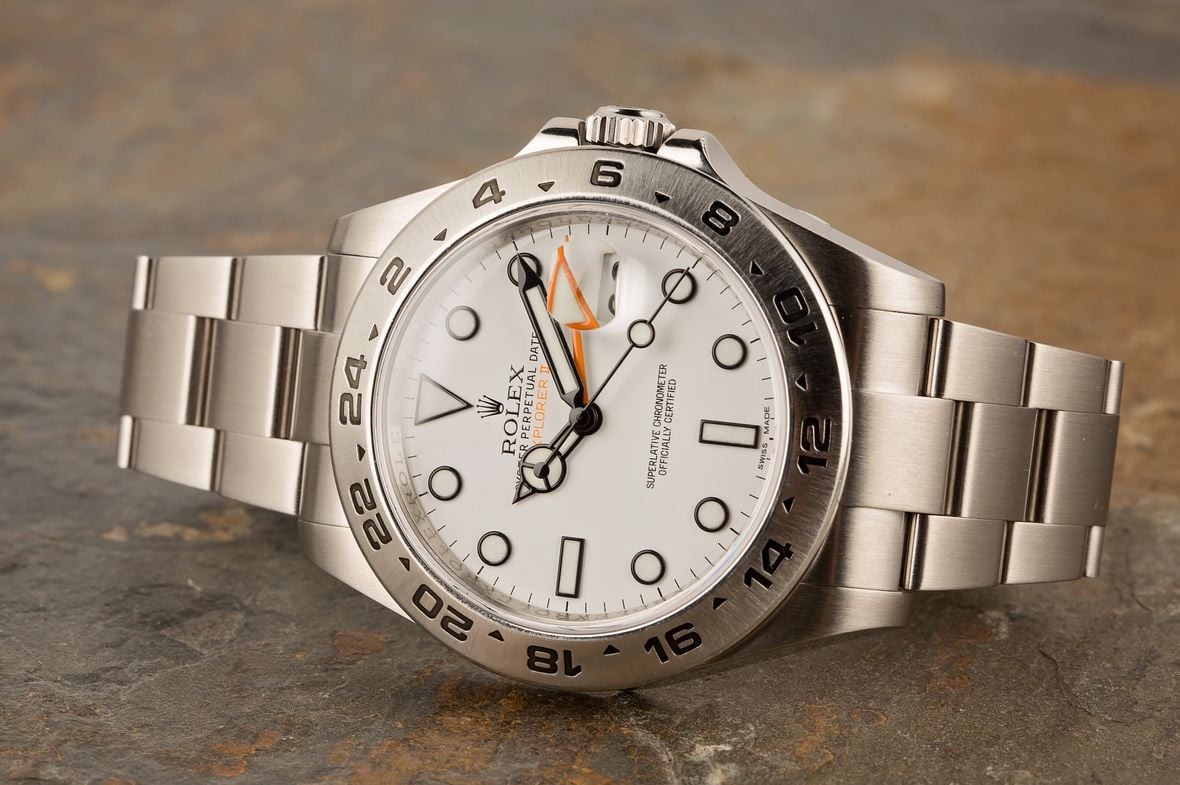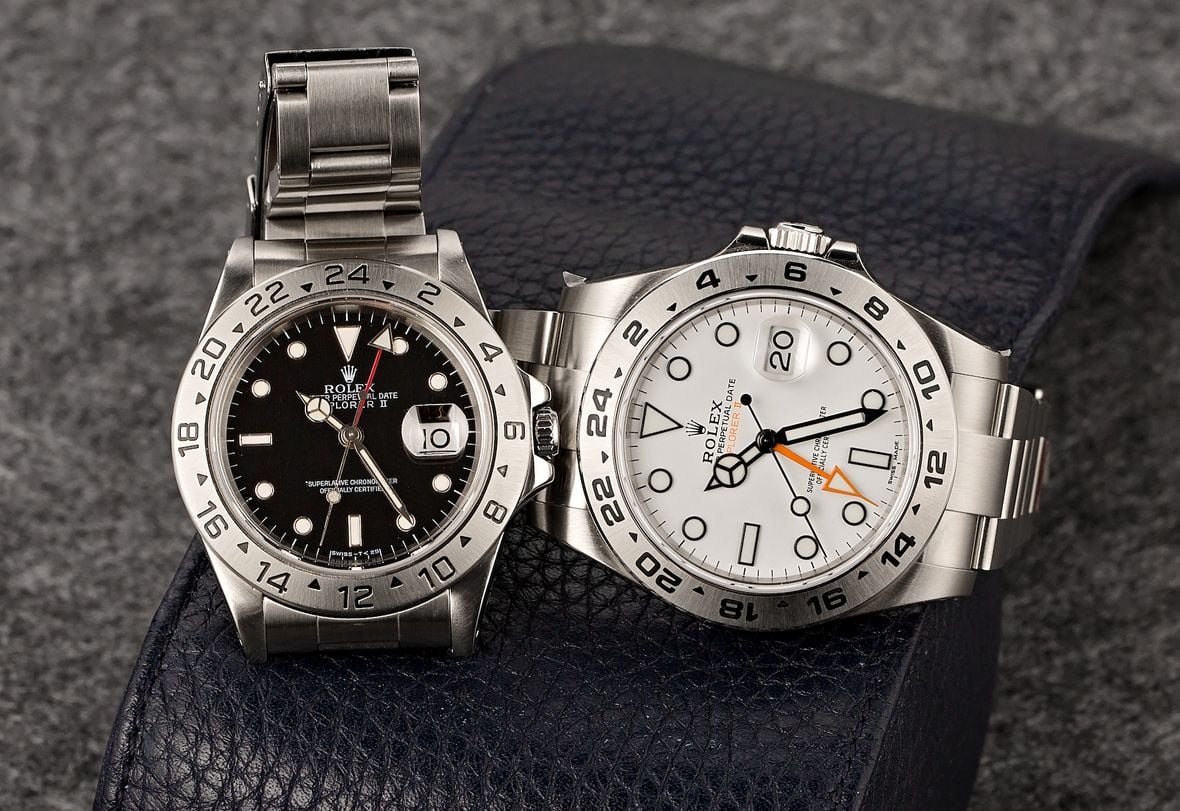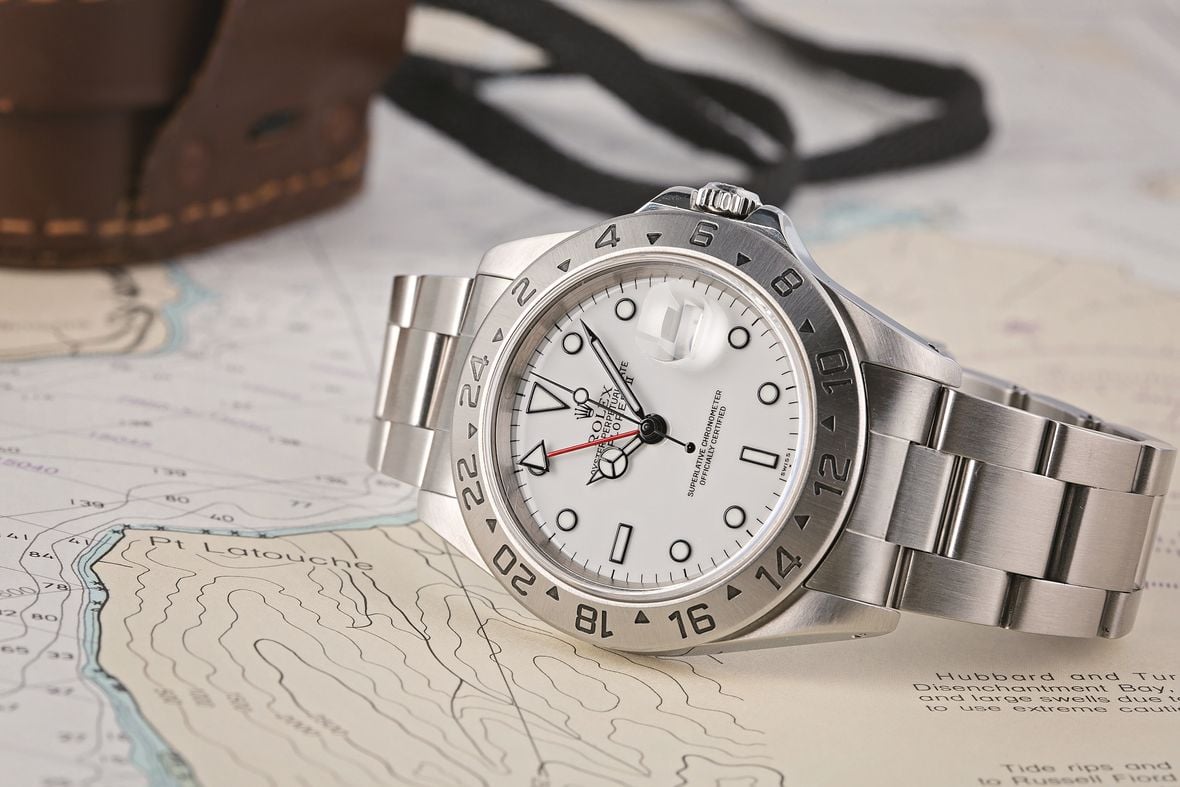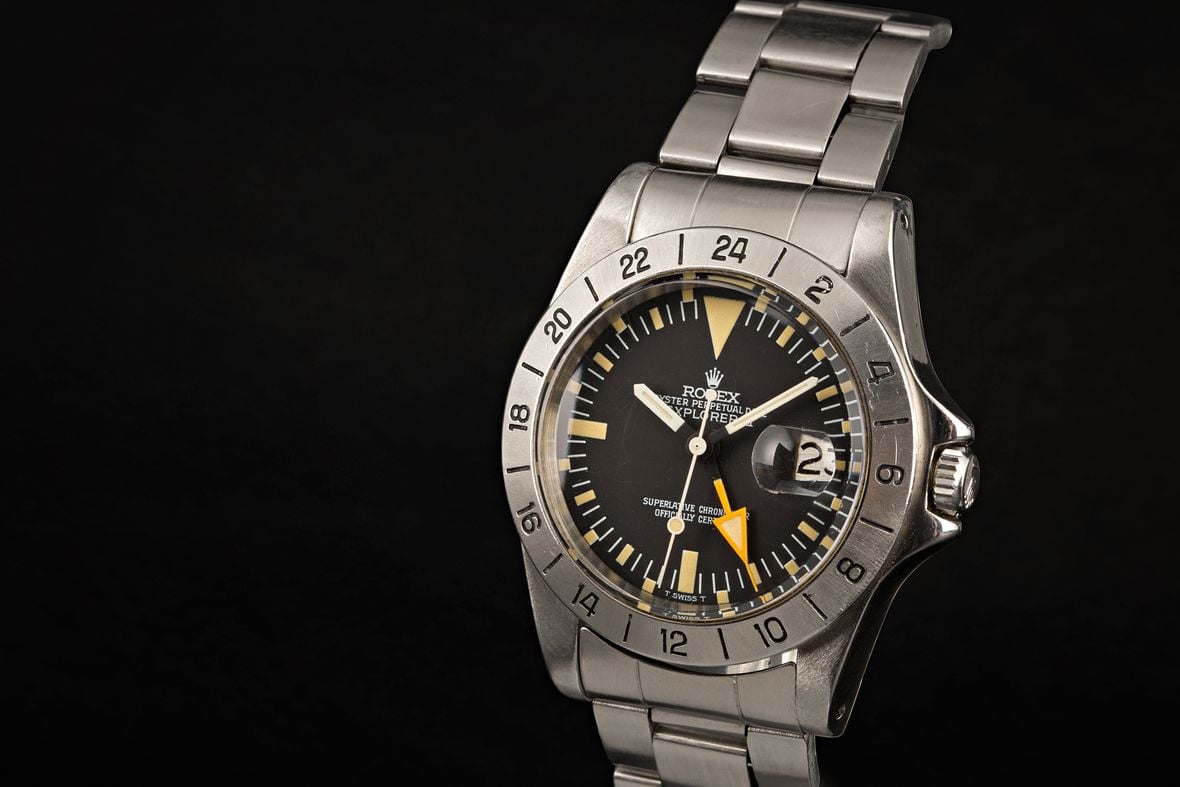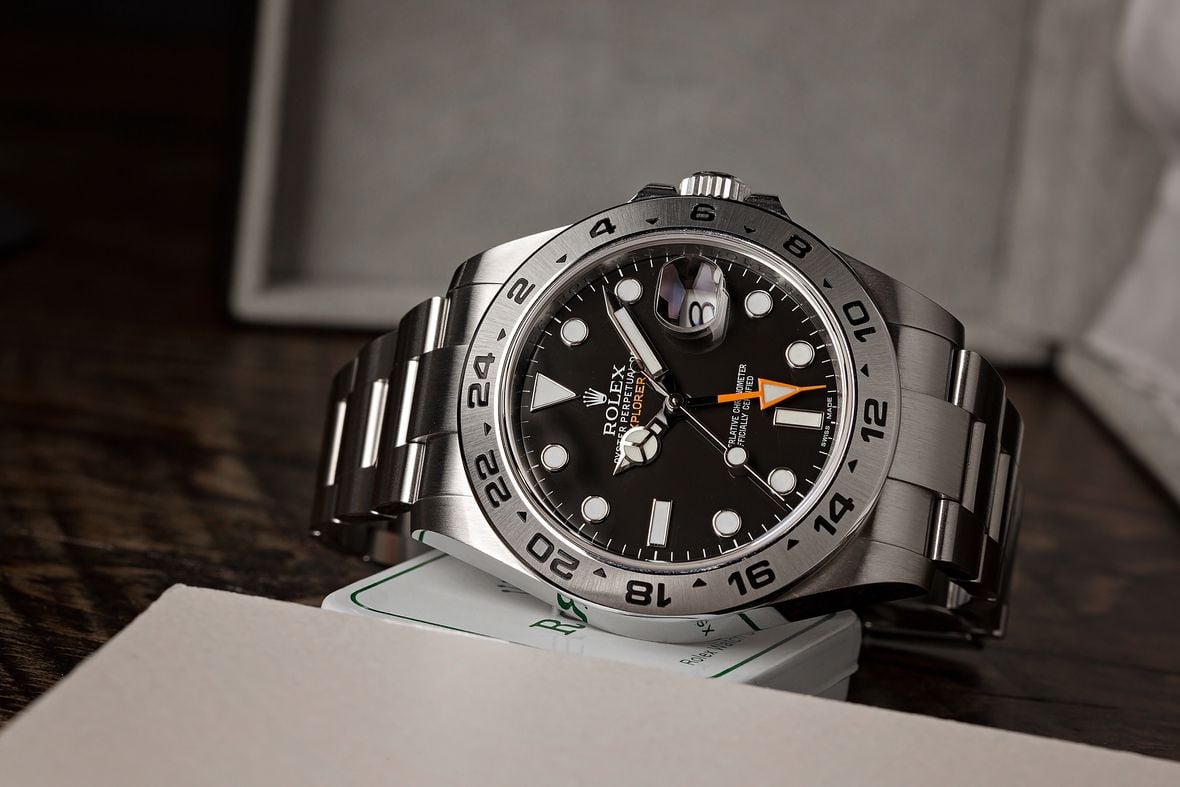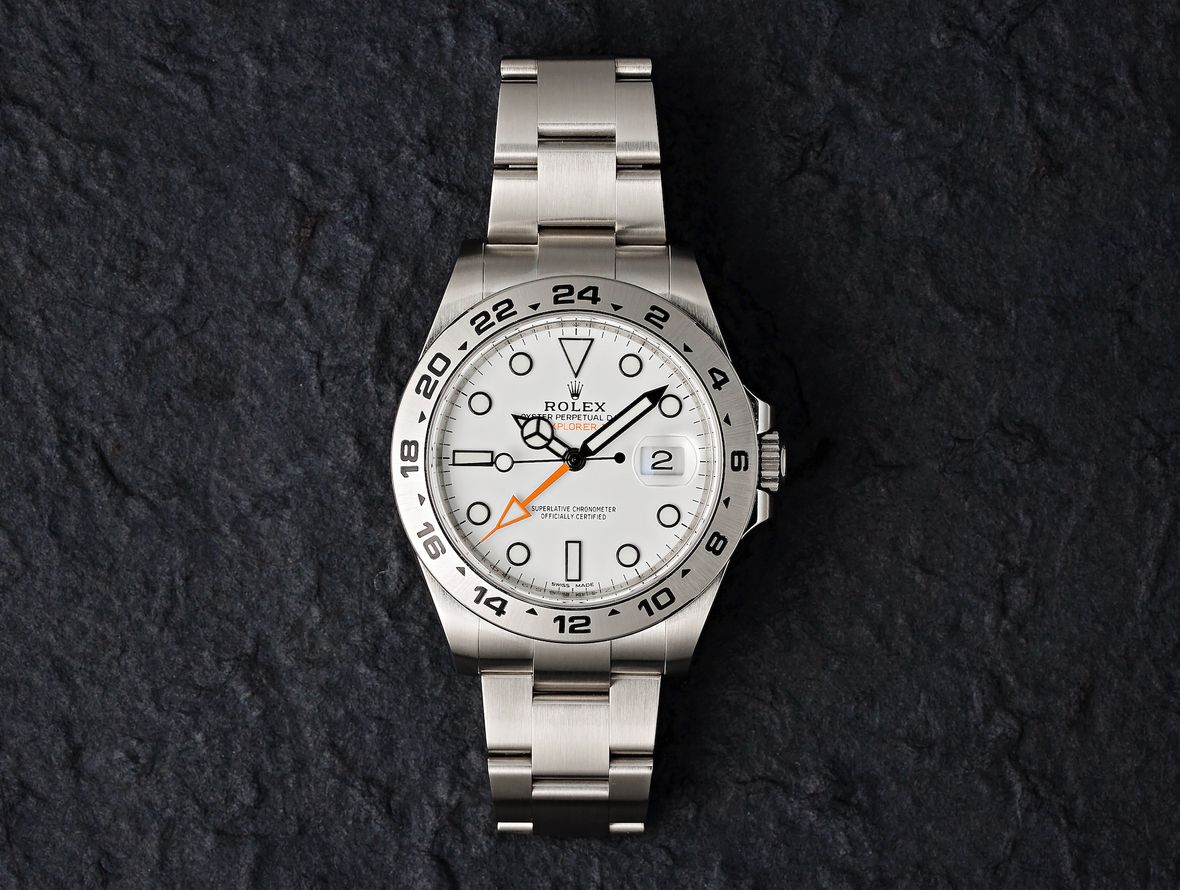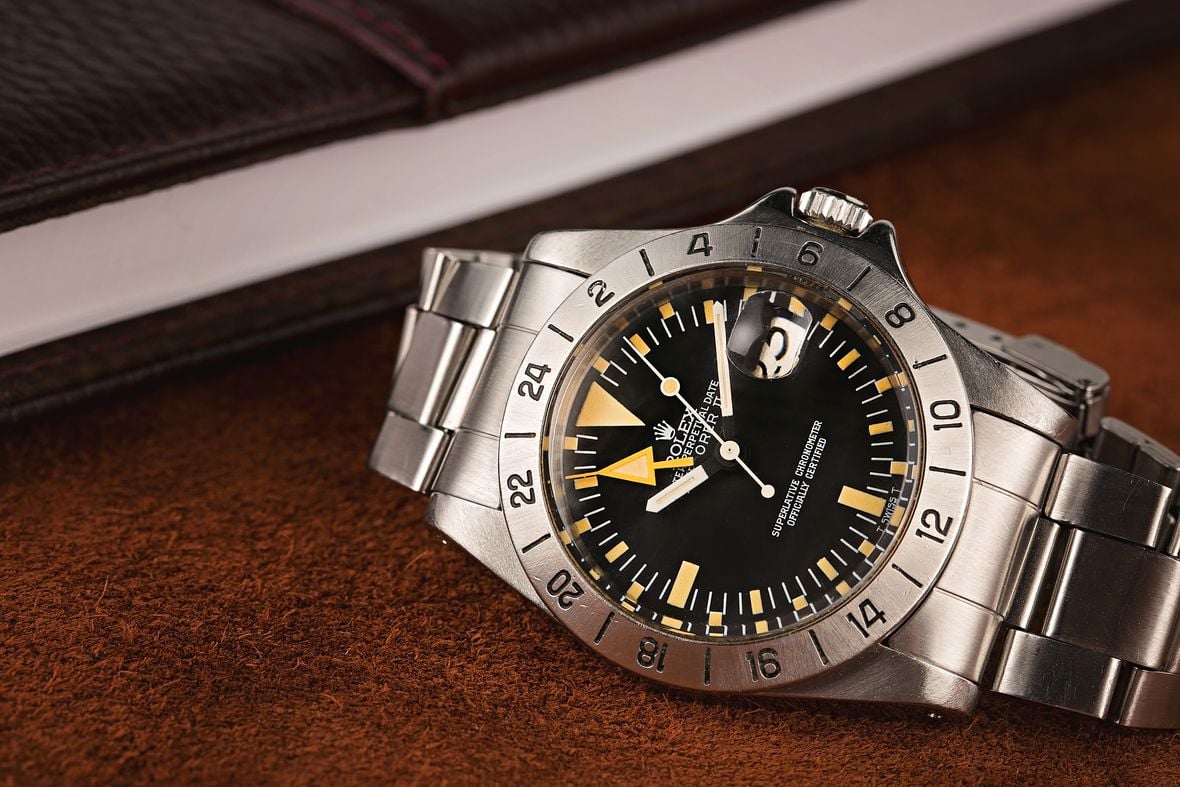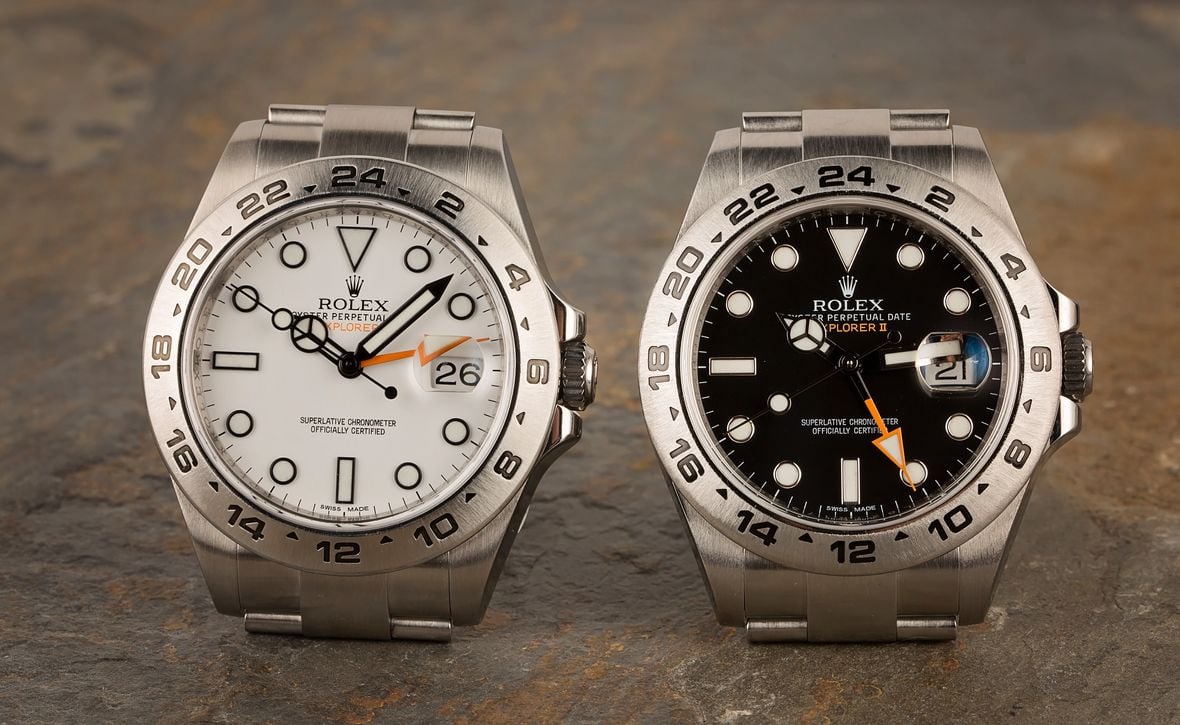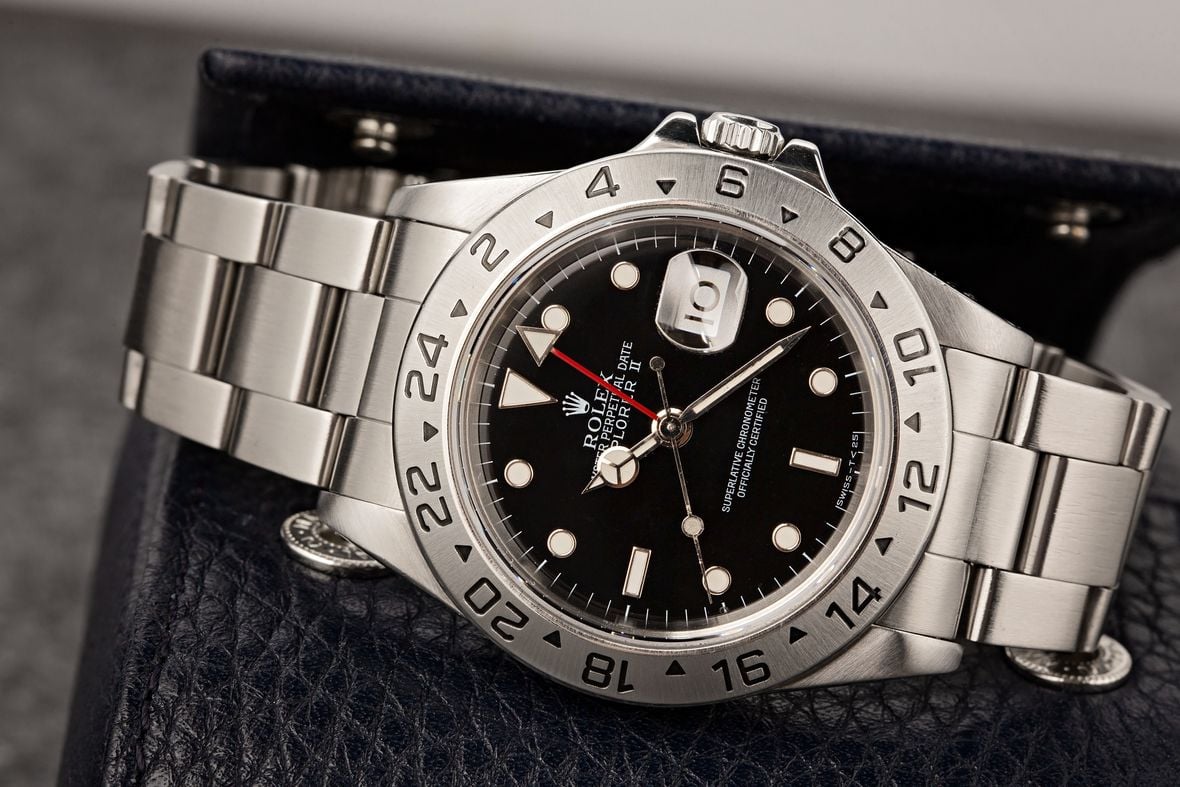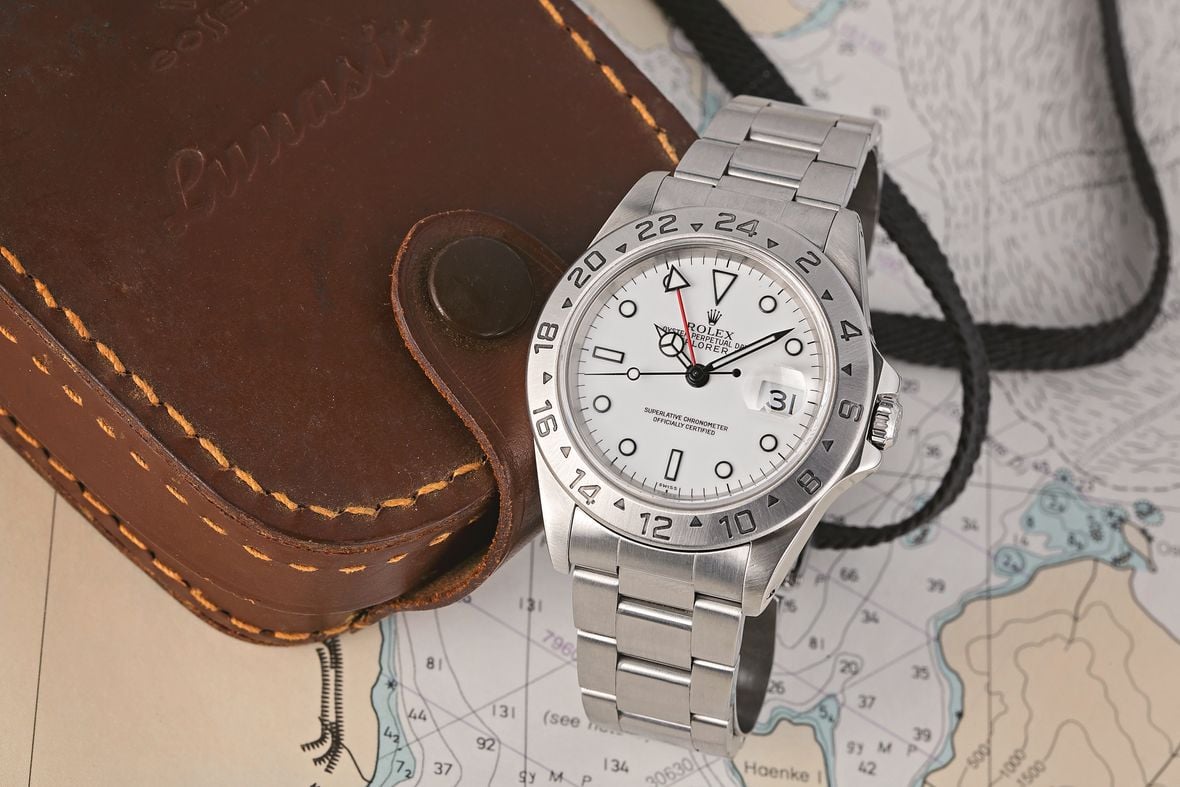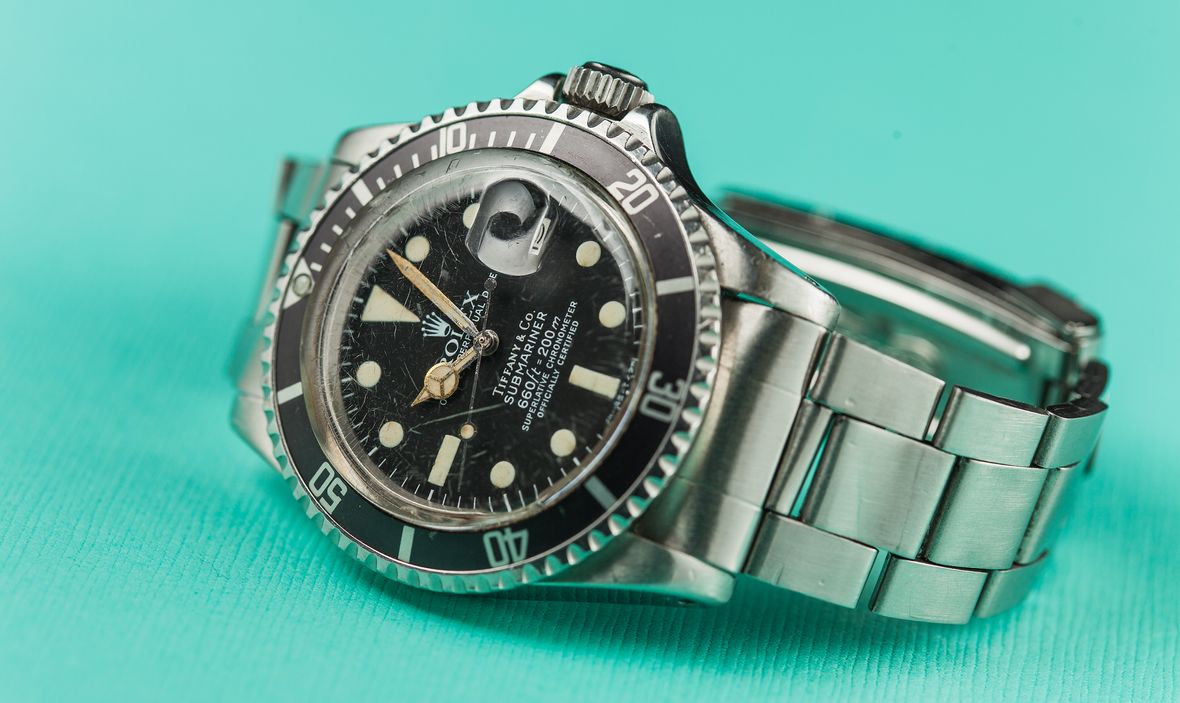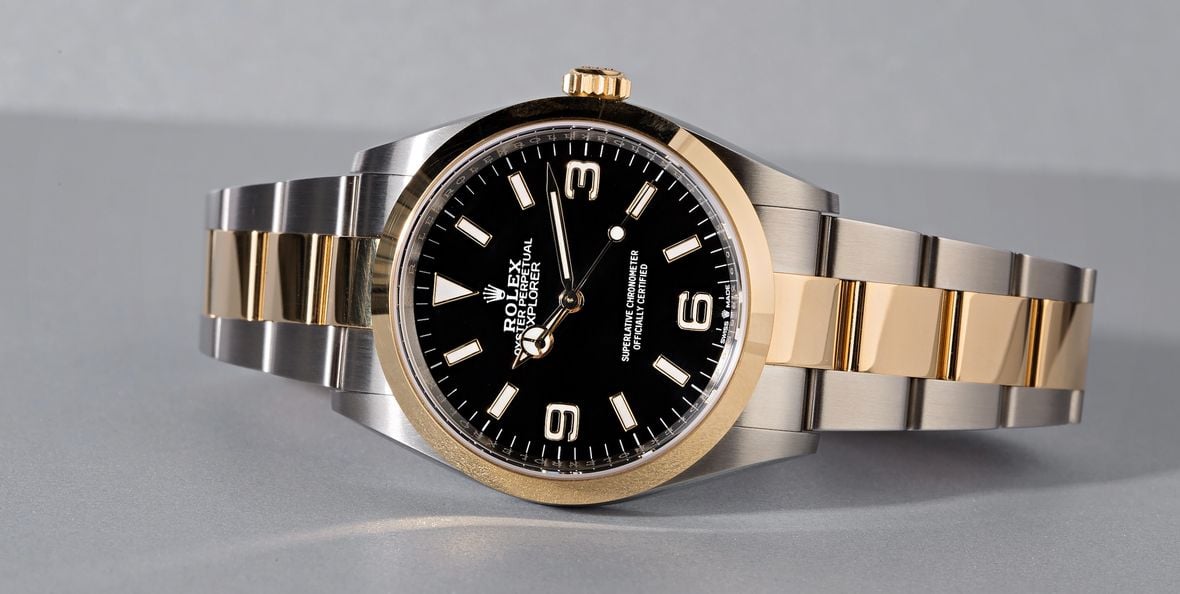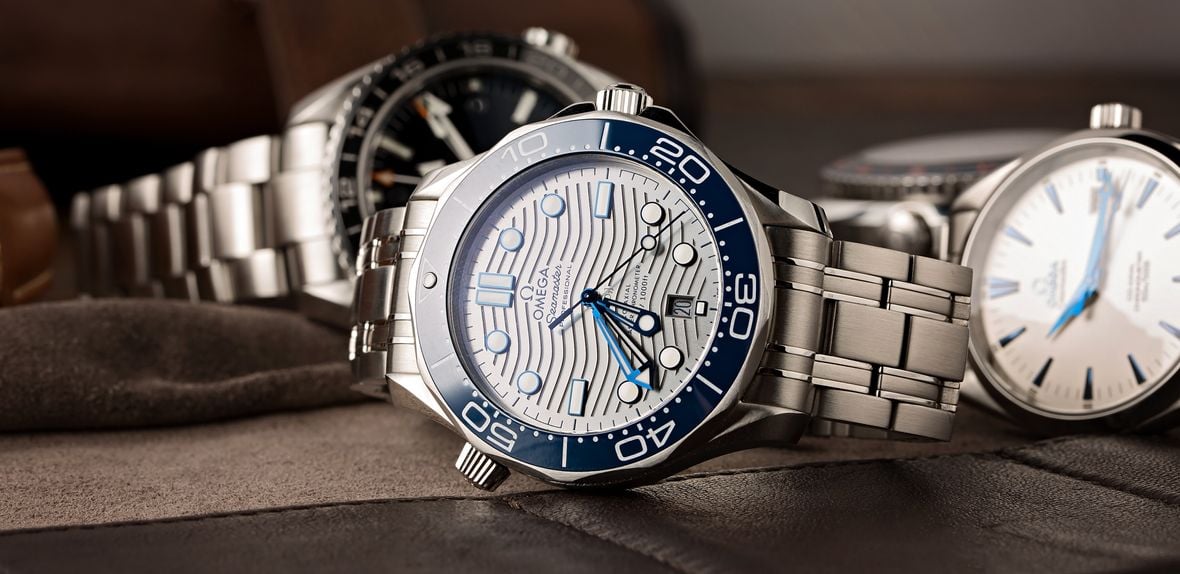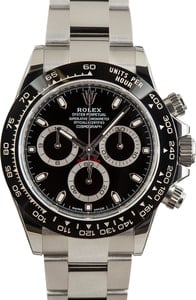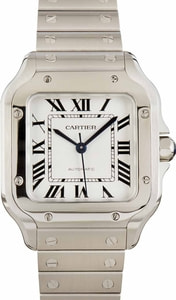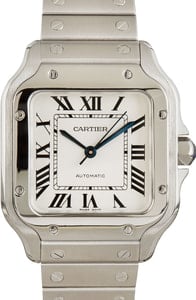First introduced in 1971 and remaining part of the brand’s lineup ever since, the Rolex Explorer II was created as an addition to the Rolex brand’s existing Explorer collection, rather than as an update or replacement. While the classic Explorer was simply a rugged time-only watch created to be worn throughout a variety of demanding sports or activities, the Rolex Explorer II was designed specifically for speleologists (cave explorers) and featured an additional 24-hour hand on its dial to help its users keep track of day and night while spending extended periods of time in complete darkness.
The now popular Rolex Explorer II sports watch has historically been regarded as one of the most overlooked and undervalued Rolex watches, but that has increasingly been changing in recent years. Not all that long ago, you could expect to pay significantly less for a Rolex Explorer II than for one of its more famous siblings like the Submariner or GMT-Master II, but that has changed in recent years, and now Explorer II watches are right up there with the rest of the other popular Rolex sports watches available – both in terms of price and demand.
Rolex Explorer II
Explorer II Fact Facts:
– First introduced in 1971.
– Originally designed specifically for speleologists (cave explorers).
– Created as an addition to the Explorer collection, rather than as an update or replacement.
– Only ever crafted from stainless steel (as of 2021).
– Always features an additional 24-hour hand.
– Includes a fixed, stainless steel bezel with 24-hour markings.
– Automatically changing date display at 3 o’clock.
– Only offered on Rolex’s Oyster bracelet.
– Always features a chronometer-certified movement.
– Offered with either a white or black dial (since second generation).
– Offers GMT functionality (except first generation).
Click here to learn more about the evolution of the 24-hour hand on the Rolex Explorer II.
Rolex Explorer II Timeline
Each model in Rolex’s sports watch series accommodates a different profession and as we already mentioned, the Explorer II’s niche caters to spelunkers with a convenient AM/PM indicator, luminous display on the dial, and highly resilient exterior. It’s easy to lose time when navigating through dark crevices and tunnels for multiple days at a time. The 24-hour hand positioned on the dial coordinates with the fixed 24-hour bezel, helping the wearer keep track of day and night hours when the sun otherwise would not be visible.
1971: Ref. 1655
The first Explorer II hit the market in 1971 in the form of the ref. 1655, featuring a 39mm stainless steel case and distinctive dial and handset exclusive to this reference alone. The central hands are straight, compared to the now-iconic Mercedes-style hands seen on modern sports watches. Additionally, the 24-hour hand is tipped with a large, colorful arrow. Rolex’s signature dot hour markers are not present and instead, the ref. 1655 displays the time with offset square and rectangular hour markers that are actually designed to be used with its prominent 24-hour hand.
It’s also important to note the bezel that features 24-hour graduations with alternating numerals and stick markers. This design is only available on the ref. 1655, which continued production until the mid-1980s. Rolex equipped the first iteration of the Explorer II with the same movement as the GMT-Master series, the cal. 1575. During this time, the 24-hour hand was not yet independent, and the Explorer II wasn’t able to be classified as a GMT watch; its 24-hour hand was more-or-less an oversized AM/PM indicator.
1985: Ref. 16550
The Rolex Explorer II as we know it today first began to take shape in the mid-1980s with ref. 16550. The Mercedes hands displayed on nearly every modern Rolex sports watch replaced the stick hands of ref. 1655. The older-style hour markers were retired in favor of the modern style of applied circles and rectangles outlined in white gold, and the hashes on the bezel were replaced with small, inverted triangles.
The ref. 16550 also introduced the series to a sapphire crystal, a larger 40mm case, a white dial option, and a higher-beat cal. 3085 movement. Looking at the 24-hour hand, you will notice that the fat orange arrow has been swapped for a sleeker, red hand with a smaller arrow tip. With the newer movement, the two hour hands became independently adjustable. This upgrade transformed the Explorer II from an AM/PM timepiece to an actual GMT watch with dual-time capabilities and a jumping local hour hand.
1989: Ref. 16570
After just four short years, the transitional ref. 16550 stepped down, making way for ref. 16570. Both variations are incredibly similar in design save for the movement, which Rolex upgraded to the cal. 3185 and then later cal. 3186. Despite the different movements, the core functionality remained unchanged from the previous generation, with each new caliber offering slight improvements and refinements.
However, the Rolex brand of watches gave the most significant upgrade to the white Polar Rolex Explorer dials of the new Explorer II watches, swapping the white gold surrounds for ones that were finished black, with a similar design approach extending to the hands. The reference 16570 was produced for over two decades, during which it also received an upgraded rehaut engraved with the Rolex name (along with the watch’s individual serial number) as a way of thwarting counterfeiters.
2011: Ref. 216570
The current iteration of the Explorer II hit the market just in time to celebrate four decades of production. To honor the first reference 1655, Rolex brought back the original oversized, bright-orange arrow hand. The company upgraded the rest of the Rolex Explorer reference 216570 models for sale to reflect the latest in its watchmaking capabilities and design approach. The 40mm case is gone, making way for a larger, more contemporary 42mm case.
Additionally, the ref. 216570 features a Maxi dial, a staple of the modern Rolex tool watch series that features larger hour markers and broader hands finished in blue-glowing Chromalight. Rolex also upgraded the movement to the caliber 3187, a move made to accommodate the case’s larger size, while simultaneously adding Rolex’s proprietary Paraflex shock absorbers to the already robust design of the watch itself.
2021: Ref. 226570
At the Watches and Wonders Geneva 2021 online event, Rolex released a brand-new generation of the Explorer II to celebrate the 50th anniversary of its cave explorer watch. Prior to its release, many collectors speculated that the new model would be a major overhaul of the watch, but the updated Rolex reference 226570 is incredibly similar to its predecessor from an overall aesthetic perspective. While proportions have been updated and minor details have been refined, the key improvement to accompany the new model is the addition of Rolex’s Caliber 3285 movement, which features the brand’s Chronogery escapement and a longer 7-hour power reserve.
Key Explorer II Defining Elements
Oyster Case:
Rolex developed the Oyster case in 1926, naming it after its incredible ability to be sealed for maximum water-resistance. Today, the case has seen countless upgrades, including improved materials and increased waterproofness. It’s also a staple of both the dress and sports watch categories as it is the only case trusted to protect the intricate movements powering each Rolex watch. The depth rating will vary, depending on the model. For the Explorer II, the Oyster case offers water-resistance up to 100 meters (330 feet), which is more than enough protection to guard the movement against humidity and moisture while venturing deep into the Earth. As a spelunker’s tool watch, stainless steel also seems a prudent metal choice for the case as it is more resistant to dings, scratches, and corrosion than two-tone or precious metal options.
24-Hour Bezel:
This feature is a pillar of the Explorer II series developed to track day and night hours or display a second time zone, depending on the specific reference. The bezel is fixed, meaning it does not rotate like most tool bezels in the Rolex portfolio. It also features a 24-hour track that corresponds to an additional hour hand that circles the dial once every 24 hours.
Oyster bracelet
The classic Rolex Oyster bracelet is another staple of the professional series distinguished by its flat, three-piece links. It is sleeker and sportier than other bracelet options afforded to the Rolex catalog. While there are slight differences in the bracelet’s design to accommodate the various Explorer II references, it is always presented in brushed stainless steel.
– Clasp: The modern Explorer II is outfitted with the Rolex Oysterlock clasp, a folding clasp that features an advanced, multi-component locking mechanism.
– Clasp expander: Another feature on modern Explorer II watches is the Easylink extension system (patented in 1996). The mechanism is hidden underneath the clasp and can be adjusted to add 5mm to the bracelet’s length, completely on-the-fly and without requiring any tools.
Movements
– 1575: While not one of the Rolex brand’s most complicated movements, The first movement to power the Explorer II was the cal. 1575, the same one found inside the GMT-Master watches produced during the same time. It includes the added feature of hacking seconds, which stops the seconds hand while setting the time.
– 3085: The caliber 3085 was the first Rolex movement produced in-house to feature independently adjustable hour hands. By allowing the wearer to adjust the arrow hand separately from the standard time, the wearer can read two time zones at once, turning the Rolex Explorer II into a GMT watch.
– 3185: This movement is similar in its overall design and functionality as the cal. 3085 but with a handful of slight updates and enhancements, along with slimmer dimensions that allow the case of the watch to take on a slightly sleeker and more elegantly proportioned profile.
– 3186: Rolex replaced the cal. 3185 with cal. 3186 in 2005, featuring Rolex’s famed blue Parachrom hairspring and remedying a slight wobble in the 24-hour hand that some examples exhibited when using the jump-hour feature.
– 3187: With the upgrade from a 40mm to a 42mm case came the need for a larger movement. The caliber 3187 operates the same as cal. 3186 but with bigger dimensions to fit the case. Additionally it also includes Rolex’s in-house Paraflex shock absorbers for better impact protection.
– 3285: When Rolex updated the Explorer II collection for its 50th anniversary in 2021, it received a new movement in the form of the Caliber 3285. Already in-use in Rolex’s GMT-Master II watches, the cal. 3285 represents a whole new generation of in-house Rolex movements and features the brand’s proprietary Chronergy escapement and a longer 70-hour power reserve.
The Dial:
– 1655: The inaugural Explorer II ref. 1655 was produced for over a decade, during which Rolex made numerous changes to the dial (distinguished now as MK1, MK2, MK3, etc.). In total, there are five variations of the ref. 1655 Mark dials denoted as Mark I through Mark V, each signifying differences in the font and logo.
– 16550: Reference 16550 was the first Explorer II in the series to offer either a white or black dial. The white dial is of particular interest because the hour markers are trimmed in white gold – something that was phased out when the ref. 16550 was discontinued. Furthermore, the white paint used during its production later revealed a defect that turned the dial into a rich ivory color. Watches with these dials are highly sought-after on the pre-owned Rolex market and are some of the most expensive examples of this particular Explorer II reference.
– 16570: The white dial received an upgrade with the reference 16570, featuring black trim around the hour markers and hands instead of polished white gold. This upgrade better differentiates between the lume and the white paint on the dial for a more visible reading in both light and dark environments. The reference 16570 also utilized three different types of luminous material, beginning with Tritium, then Luminova, and then finally Super-LumiNova.
– 216570: Rolex brought back the orange arrow 24-hour hand seen on ref. 1655 to celebrate the 40th anniversary of the Explorer II. The Maxi dial also features a larger luminous display filled with Chromalight that glows bright blue in the dark. Chromalight its Rolex’s proprietary luminous material that is celebrated for its brilliant blue glow that lasts for up to 8 hours.
– 226570: Despite celebrating the 50th anniversary of the Rolex Explorer II collection, the dials found on the current-production reference 226570 watches are near-identical to the ones on the previous generation. A small Rolex logo now sits between the words “Swiss” and “Made” below the 6 o’clock location, which allows you to immediately identify the current version from its predecessor.
Rolex Explorer II Price & Availability
How much is a Rolex Explorer II worth? On average, one can expect to pay anywhere between $8k and $12k, depending on the reference and watch condition. Similarly, this also represents the point of entry into Rolex Explorer II ownership. The model’s introductory reference commands the highest price, and you will see ref. 1655 watches priced anywhere between $25k and $40k. The popular ref. 16570 averages about $8k to $11k, while the current reference 226570 has an official retail price of $8,550 but trades hands for approximately twice that on the secondary market.
While most collectors would understandably be hesitant to pay well over retail for a Rolex that is still in production, it is the only option for many. For the past several years, Rolex has been unable to keep up with the demand for steel sports watches, leaving many to join long waitlists or turn to the secondary market so that they can get their watch without the wait.
Specs & Pricing
Below are the specifications and approximate pricing for all existing Rolex Explorer II references as of June 2021:
| Reference Number | Case Size | Movement | Price (Approx.) |
| 1655 | 39mm | Cal. 1575 | $20,000 (minimum) |
| 16550 | 40mm | Cal. 3085 | $9,000 – $40,000 |
| 16570 | 40mm | Cal. 3185 or Cal. 3186 | $8,000 – $15,000 |
| 216570 | 42mm | Cal. 3187 | $11,000 – $30,000 |
| 226570 | 42mm | Cal. 3285 | $8,550 (retail); TBD (pre-owned) |
